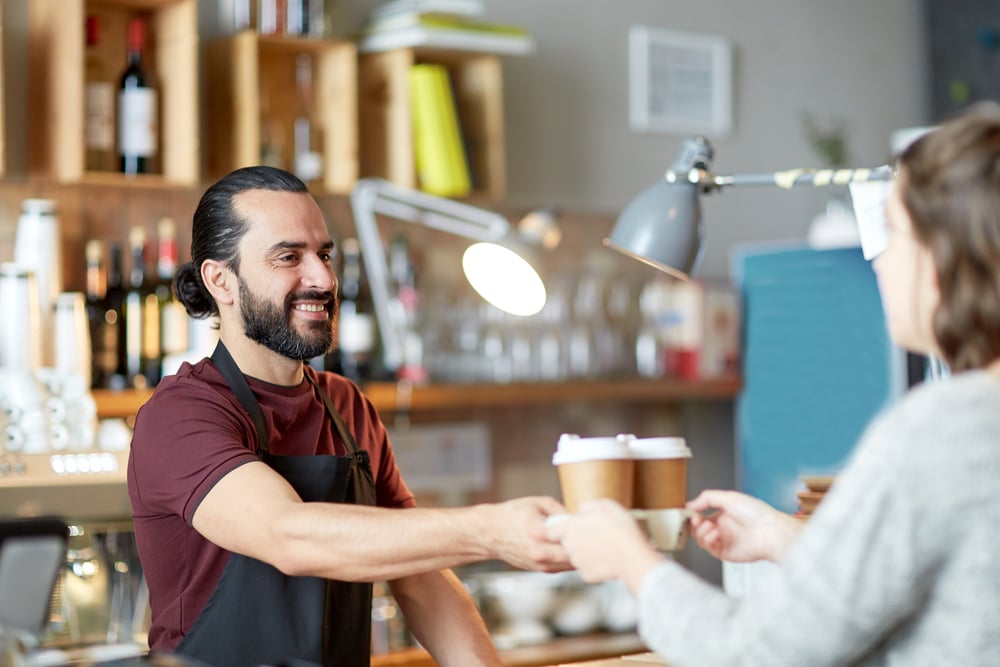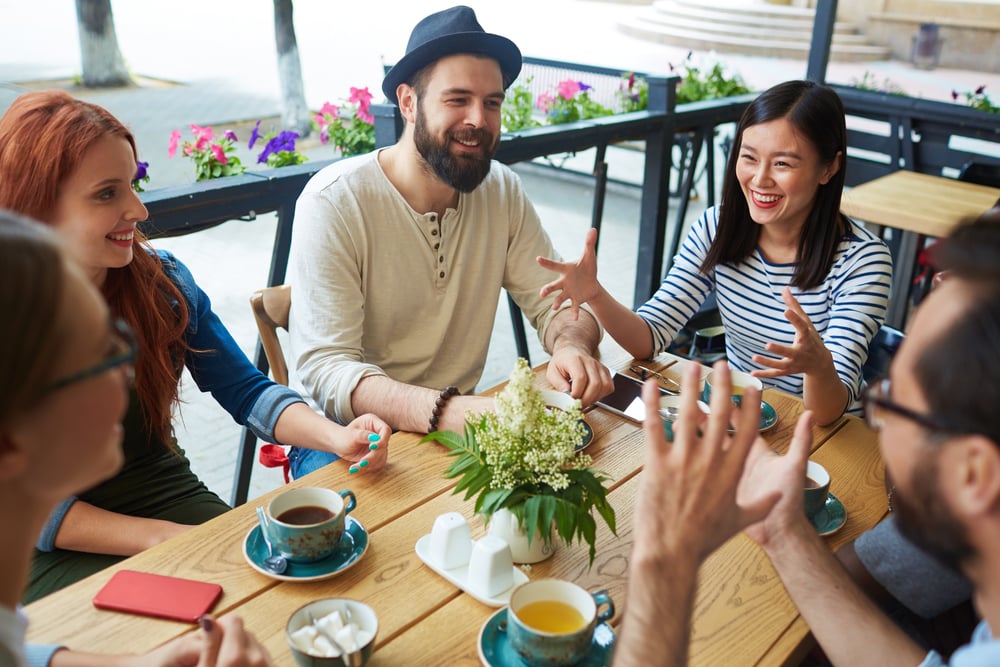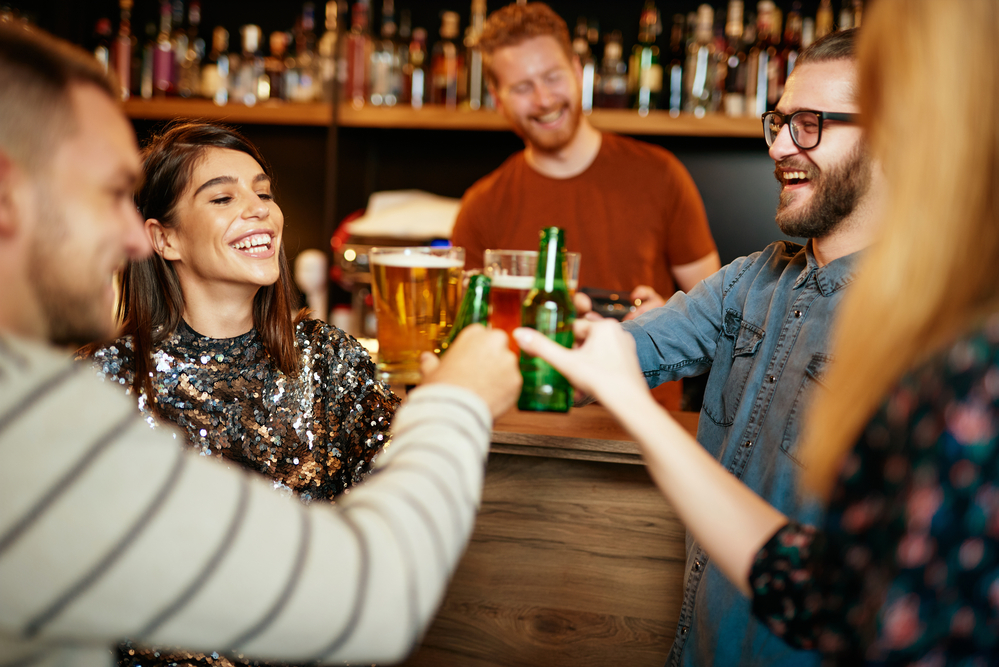Learn how to say thank you in Dutch in just a few minutes — and impress all the Dutchies around you!
Learning Dutch can seem intimidating, but these few phrases will get you further than you think, and Dutch people will appreciate the extra effort.
Are you a tourist strolling around the Dutch stroopwafel and coffeeshops? Or just want to impress the barista without having to face all those intimidating Dutch words?
READ MORE | How to order in Dutch: from getting a ‘tafeltje’ to paying the ‘rekening’
Here are 10 different ways to say thank you in Dutch so you can be ready for every situation and score some bonus points with the Dutchies. 🇳🇱
🫶 Informal ways to say thank you in Dutch
In the Netherlands, you will most likely use the informal ‘thank yous’ more than the formal versions, it’s pretty widely in most situations.
You can use them, of course, with your friends and family, but also with a cashier or the lovely stranger that lets you pet their furry friend.
1. Dankjewel or Dankje: thank you or thanks
Let’s start with the easiest and most common way how to say thank you in Dutch: “dankjewel” (“thank you”).
This is the most used by Dutch beginners because it sounds relatively similar to thank you in English.

Despite the simplicity and informality of “dankjewel”, worry not, it’s still a very respectful way to thank someone. Remember, the Netherlands isn’t a very formal society, so in most situations, you’re all set with a “dankjewel!”
If you’re a newbie at Dutch (don’t worry, we’ve all been there), you can stick to the shortened version “dankje” (“thank you”). This informal phrase is perfect when thanking close friends and family.
2. Bedankt: thanks
If it’s all a bit too much of a headache differentiating between formal or informal for every situation, say hello to your new best friend — “bedankt” (“thanks”)!
A small “bedankt” is a great way to cover all your bases. Whether you’re thanking the bakery cashier or your friends’ parents, “bedankt” also works in most situations to say thank you in Dutch.
3. Echt heel erg bedankt: Really thank you very much
Ready to take it one step further?
If you need to thank someone in Dutch for an amazing gift or for paying back a big Tikkie, you can use “echt heel erg bedankt” (“really thank you very much”).

This way of saying thank you in Dutch is particularly for when you want to express that you’re feeling extra grateful towards someone.
4. Superbedankt: super thanks
A less common but cute phrase that you might hear around is “superbedankt”, meaning “super thanks”.
This is very informal and is reserved for really close relationships — for example, if a Dutchie has added you to their bathroom calendar. 😉
READ MORE | The top 16 free ways to learn Dutch
If someone says this to you, though, make sure to listen carefully to their tone.
The Dutch can sometimes be quite direct and might use “superbedankt” in a bit of a sarcastic way — meaning that you’re not actually being helpful, even though you might think you are… (oops!)
5. Dank jullie wel: thank you (in plural)
As a quick Dutch language lessons recap: ‘je’ is the singular informal ‘you’, while ‘u’ is the formal version. Here’s the bonus lesson: ‘jullie’ is the plural conjugation of you in Dutch.
Here’s how to say “thank you” in Dutch when you’re talking to a group of people: “dank jullie wel”.

So, next time you have friends over and, like a true Dutchie, send your friends away right before dinner, make sure to give them a “dank jullie wel” on their way out the door!
How to informally say thank you in Dutch: cheatsheet
| English 🇬🇧 | Dutch 🇳🇱 | Dutch Pronunciation 🗣️ |
|---|---|---|
| Thank you | Dankje | Dahnk-jeh |
| Thank you | Dankjewel | DAHNK-ye-vel |
| Thanks | Bedankt | Buh-DANKT |
| Really thank you very much | Echt heel erg bedankt | Ekt heel ehrg BE-dahnkt |
| Super thanks | Superbedankt | SOO-per be-dankt |
| Thank you (in plural) | Dank jullie wel: | DAHNK yoo-lee vel |
🤝 Formal ways to say thank you in Dutch
Are you in need of a formal way to say thank you in Dutch? Here are five ways to thank someone in more formal situations, such as at work, with your partner’s parents, or when talking to someone much older.
6. Dankuwel: thank you
Starting a job with a Dutch boss and want to impress them with a few Dutch words? Drop a “dankuwel” (“thank you”) in the conversation.

The easiest and most common way how to say thank you in Dutch in a formal setting is “dankuwel”. The great thing about it? Its simplicity makes it perfect for Dutch beginners!
7. Hartelijk dank: hearty thanks
Do you want to thank your Dutch partners’ parents for having invited you on holiday? Or need to make a speech in front of a Dutch crowd?
Meet “hartelijk dank”, which translates to “a heartfelt thank you” in English.
Sometimes, formal words can feel not as sincere, and so is a really nice way to really express your appreciation in Dutch while maintaining a formal tone.
8. Dank u zeer: thank you very much
Another useful Dutch phrase to have in your books is, “dank u zeer”, meaning “thank you very much”.
Say that you just went on a boat tour of Amsterdam’s canals with a great guide that told you all about the secret spots and the most delicious restaurants in the city.

As you hop off the boat, use “dank u zeer” to thank them for the great experience and watch them be dazzled by your friendly Dutch skills.
9. Bij voorbaat dank: thank you in advance
Hang in there as we knock it up a gear. Here’s how to say “thank you in advance” in Dutch: “bij voorbaat dank”. But not: this is really only used in emails.
Next time you’re writing an email in Dutch to someone higher up in rank, you can use “bij voorbaat dank” to end it off — and then proudly take a big bite out of that well-deserved stroopwafel.
10. Alvast bedankt: thanks in advance
Since there’s usually not much emphasis on hierarchy in the Dutch workplace, you can also finish off an email with “alvast bedankt” (“thanks in advance”) when writing to close colleagues.
This thank you is a less formal way to sign off an email in Dutch while maintaining a minimum of formality — to avoid any chance of making someone uncomfortable.
How to formally say thank you in Dutch: cheatsheet
| English 🇬🇧 | Dutch 🇳🇱 | Dutch Pronunciation 🗣️ |
|---|---|---|
| Thank you | Dankuwel | DANK-oo-vel |
| Hearty thanks | Hartelijk dank | HEART-a-lick-e -DANK |
| Thank you very much | Dank u zeer | DAHNK oo-zeer |
| Thank you in advance | Bij voorbaat dank | BYE for-baat DAHNK |
| Thanks in advance | Alvast bedankt | Al-fast be-dahnkt |
🙌 Bonus: how to say ‘Please’ and ‘You’re welcome’ in Dutch
What about adding a few more basic essential Dutch phrases to your vocabulary?
Alsjeblieft/Alstublieft: please
A key word that you’ll not only use a lot but also hear around a lot in the Netherlands is “alstublieft” (“please”).

Just add it after anything you are asking for. Want to order a beer after a long week at the office? Here’s how you can do that: “een biertje, alstublieft” (“a beer, please”).
It’s best to stick to alsjeblieft, which is the most common way to say please in Dutch. “Alstublieft” is the polite form with the formal ‘u’, and “alsjeblieft” with the ‘je’ is a bit more informal.
READ MORE | 12 of the best apps to have as an international in the Netherlands
You’ll probably also experience someone handing you something and then saying “alstublieft”, like a coffee or a shirt in a store. Don’t panic and think that they’re asking something of you, it can also mean “Here you go” in Dutch.
Graag gedaan: you’re welcome
In Dutch, instead of saying, “you’re welcome”, we say “graag gedaan”. This cutely translates to “gladly done” or “it’s my pleasure” in English.
Say you are giving a tip at a restaurant and the server says “dankjewel”, you can doubly impress them by then saying “graag gedaan.”
Geen probleem: no problem
Finally, another way to answer when someone thanks you is to say “geen probleem” (no problem).
Next time you pass your Dutch colleague a beer at the borrel, say “geen probleem” and watch them smile (and maybe tease you a little about your pronunciation).
With these ways to say thank you in Dutch in your pocket, you’re all good to go and explore the land of canals, stroopwafels, and tulips!
What’s your favourite way to say thank you in Dutch? Tell us in the comments below!




